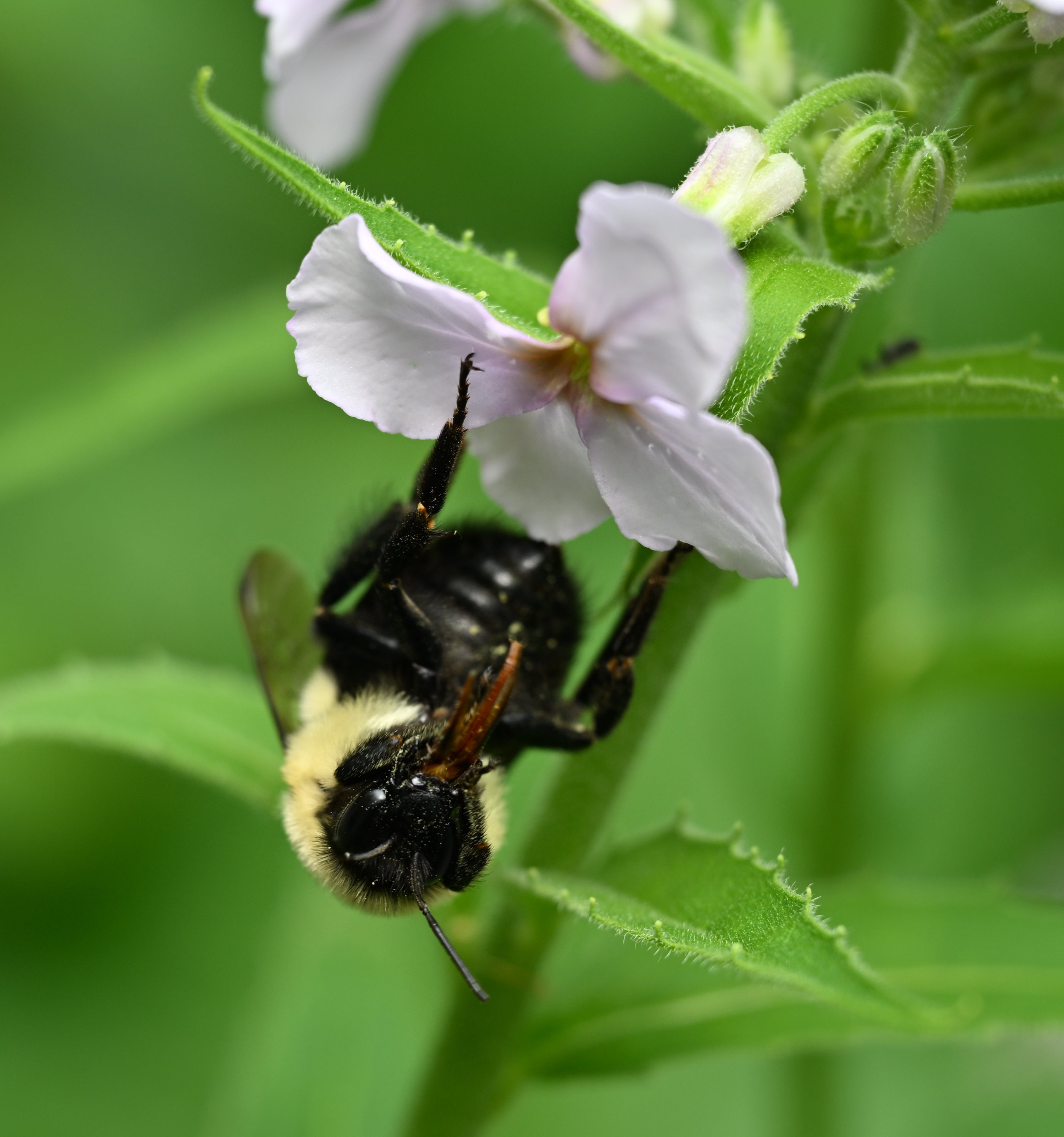
The Importance of Pollinators
Article by Meghan Taylor
April showers are not the only ingredient required to bring May flowers. In most plant species, there are male and female plants. In order to produce flowers and fruit, the male plant must fertilize the female plant, which is referred to as pollination. Pollination occurs when pollen is moved within flowers or carried from flower to flower by pollinating creatures or by the wind.
The transfer of pollen in and between flowers of the same species leads to fertilization and successful seed and fruit production for plants. Pollination ensures a plant will produce full-bodied fruit and a full set of viable seeds.
“It is estimated that up to 95 per cent of plants on earth require help with pollination,” says Kate Dickson, outreach lead for The Land Between. “These plants include food sources, such as fruits, vegetables and nuts, plants that are commercially valuable for fibre and raw materials, as well as flowering shrubs and trees running from your shoreland to the forest. Plants are the foundations or base of our entire ecosystems.”
Initiatives like “No Mow May” sound simple and almost come across as a method of delaying yard work amidst unpredictable spring weather. However, as is so often the case, leaving lawns, gardens and shorelines alone through the spring thaw has much more significance to what’s happening below the surface, than what we see above.
Spring is seen as a time to sweep, rake and otherwise tidy homes and yards before the busier summer season, when company comes calling. The plan is to remove debris so plants can flourish, grow more quickly and produce those showy garden flowers everyone loves to see. On the flip side of that, fallen debris, such as pinecones, leaves and twigs, and shoreline vegetation can all be important habitat for the critters who pollinate plants.
“People often think of bees or butterflies when it comes to pollinators, but there are so many more species that act as important pollinators in the Muskoka region,” explains Dickson.
What can be considered by some as pests, are of critical importance to the balance of Muskoka’s ecosystems. Birds, bats, beetles, butterflies, moths, squirrels and other insects are all important pollinators. Much reviled mosquitoes and blackflies are even pollinators. However, the impact of humans on the land and waterways is also seen in the decline of several pollinator species. Species-at-risk in Muskoka, including the little brown bat, tricoloured bat, northern bat, yellow-banded bumble bee, monarch butterfly and mottled duskywing butterfly, play critical roles in the ecosystem.
Many of these species-at-risk and other pollinators in Muskoka live in shoreland area. Shoreland extends from the shallows of the water to 30 metres upland and maintaining native vegetation in these spaces helps to support 90 per cent of aquatic animals and 70 per cent of land-dwelling animals, including pollinators.
“Restoring or 'naturalizing' shorelands with native vegetation restores this habitat for pollinators and other animals in the process while also offering a host of other benefits,” says Dickson. “These shoreland gardens can be completely customized and manicured with respect to height, fullness, and colour to provide any desired aesthetic.”
Native plants are much more successful in attracting pollinators to an area than non-native or ornamental plants, as the species have evolved together. Planting native gardens helps to regulate nutrient levels in soil, contributing to the health of the overall ecosystem.
“There are many beautiful, native plants to the Muskoka region and native gardens can be curated to property owners’ personal preferences,” shares Dickson.
Attracting pollinators to your yard can also take the form of bird feeders or bat boxes, to provide food and shelter. For those wary of finding bats in their umbrellas or gazebos, a well-placed bat box can provide a better solution for everyone.
“Installing bird feeders can help birds that are in decline, but always be sure to purchase devitalized feed to ensure that things that don’t belong in our ecosystems don’t wind up there,” explains Dickson.
While many insects are pollinators, birds and bats also rely on insects as a food source. The use of insecticides has a compound effect, removing necessary insects from the plant pollination process and reducing the food sources for birds, bats and other animals.
“Insecticides are widely used in the Muskoka region to eliminate nuisance insects from properties,” says Dickson. “However, these insecticides, even those labelled as 'all natural,' are broad spectrum and indiscriminate with respect to which insects they kill. In other words, by using insecticides, property-owners are likely unintentionally eliminating beneficial insects responsible for pollinating the plants we rely on.”
The bottom line? A beautiful, lush garden and sustainable shoreline rely on pollinators, in all their forms. More pollinators lead to an improved habitat for all, humans included.
